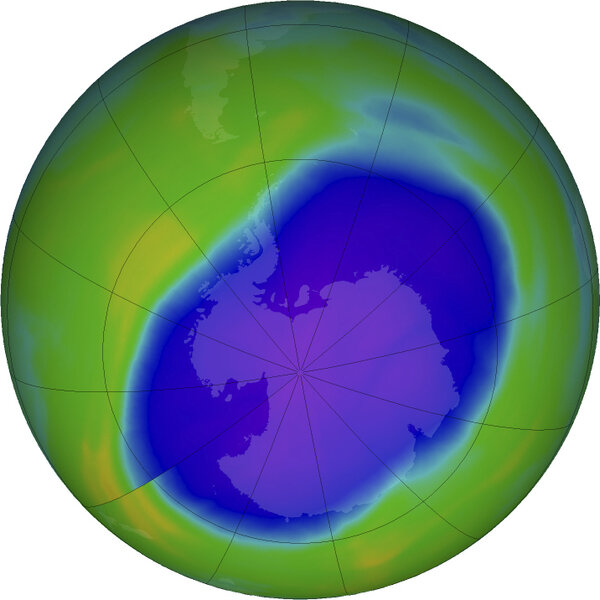Earth’s protective layer of trust and unity
Loading...
Amid repeated studies showing that humanity is falling short of its targets to reduce global warming emissions, the United Nations issued some good news this week. The ozone, a thin layer of the upper atmosphere that shields Earth from the sun’s harmful ultraviolet radiation, is healing.
That offers timely confirmation that nations can successfully unite to address environmental problems caused by human activity and potentially reverse the course of climate change. The conclusion was published in the agency’s latest four-year assessment of compliance with a 1987 international treaty banning an array of chemical substances that were damaging the protective layer.
The success of the Montreal Protocol charts a pathway in human thinking from alarm to cooperation to innovation in response to a common threat. It is “an encouraging example of what the world can achieve when we work together,” U.N. Secretary-General António Guterres tweeted.
A bond of three oxygen atoms, ozone is found in the stratosphere about 9 to 15 miles above the planet’s surface. In the early 1970s, scientists began warning that the gases then commonly used as refrigerants and spray-can propellants were deteriorating the layer by breaking apart ozone molecules. Those initial warnings led to limited bans on aerosols made of chlorofluorocarbons in the United States and a few European countries.
But broader consensus was elusive until scientists reported a massive hole in the ozone over Antarctica in 1985. That sparked a global response. Within two years, 46 countries gathered in Montreal to sign an agreement phasing out the production and consumption of ozone-depleting substances. Today it is one of the few universally ratified environmental treaties, adopted by 197 countries and amended to govern 96 different substances used in thousands of industrial applications.
Although climate change is a much larger and more economically diversified challenge, the global response to the ozone threat holds useful lessons – particularly building trust among potential adversaries – that can lead to stronger regulations and faster innovation. As Robert Falkner, a professor of international relations at the London School of Economics, noted in the 2005 book “The Business of Global Environmental Governance,” chemical companies played a pivotal constructive role in the Montreal Protocol’s design and subsequent success.
“The fact that we rarely talk about the ozone anymore is a testament to our success in tackling it,” wrote Hannah Ritchie, head of research at Our World in Data, in Works in Progress online magazine. “We can involve every country. ... And we can take action quickly when we’re running up against time.”
The U.N. estimates the ozone layer will be restored to its 1980 condition by 2040. The study found that compliance with the treaty and subsequent amendments has helped mitigate global warming by as much as a full degree Celsius.
“Science,” the U.N. stated, “has been one of the foundations of the Montreal Protocol’s success.” The report is a note of calm in an atmosphere of alarm and frustration. It marks the potency of honesty, unity of purpose, and persistence – qualities of thought that can brighten humanity’s pathway through climate change.







